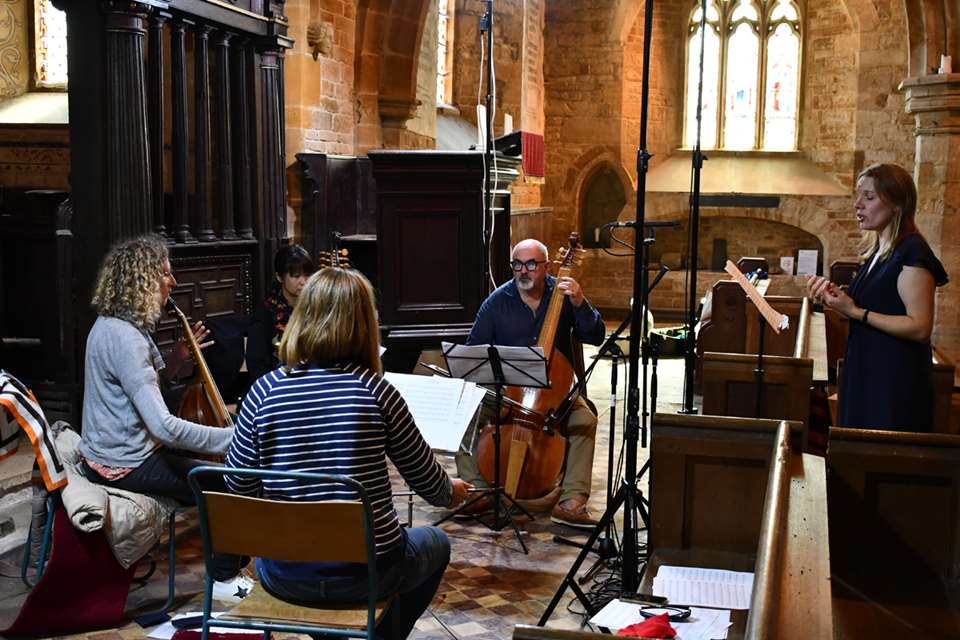Byrd 1588: A compelling insight into an extraordinary moment in English history
Tuesday, June 8, 2021
For Alamire’s new album, the ensemble’s Artistic Director David Skinner has returned a major Byrd collection to its roots. Martin Cullingford listens in
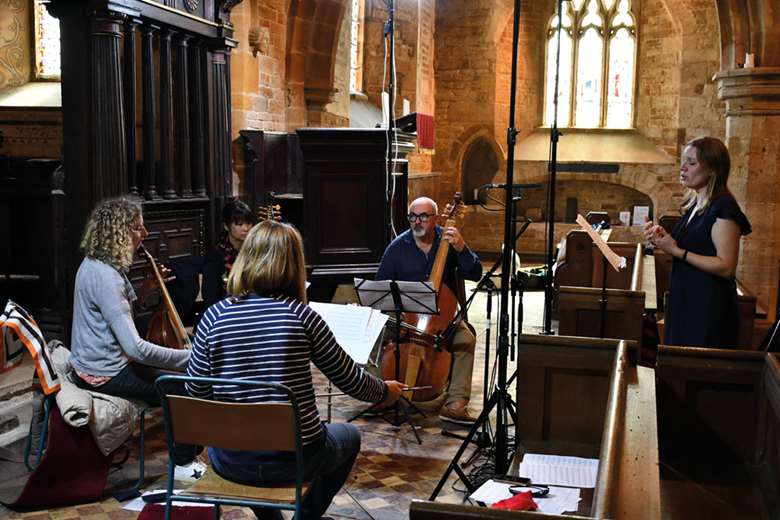
Projects from Alamire, the vocal consort founded back in 2005 by conductor and musicologist David Skinner, have often had a story to tell. Whether tracing the life of Tudor-era spy Petrus Alamire through his music (‘The Spy’s Choirbook’), or painting a portrait of doomed Queen Anne Boleyn through her favourite works (‘Anne Boleyn’s Songbook’), or most recently shedding new light on John Sheppard’s renowned masterpiece Media vita, an imaginative or intriguing concept lies behind many of their albums, piquing interest, and often garnering accolades and awards too.
Their latest project takes listeners back to the grandeur and grace of Elizabethan court life, as captured in a glorious collection of songs secular and sacred from one of the era’s finest composers, William Byrd.
In 1575 Byrd and Thomas Tallis had been granted a monopoly on music printing in England. Their joint publication Cantiones Sacrae, featuring 17 compositions each, was released by Alamire in January 2011 (and was subsequently made an Editor’s Choice in these pages). In 1588 came Byrd’s first solo publication, a collection of 35 songs comprising 10 ‘Psalmes’, 16 ‘Sonets and Pastorales’, seven ‘Songes of Sadnes and Pietie’, and two funeral elegies for Sir Philip Sidney.
‘Skinner has shaped the collection into two effective and affecting programmes, one per disc, each offering a reflective path through piety, poetry and sadness’
‘Benigne Reader,’ wrote Byrd in the preface to the publication, ‘heere is offered vnto thy courteous acceptation, Musicke of sundrie sorts, and to content diuers humors. If thou bee disposed to pray, heere are Psalmes. If to bee merrie, heere are Sonets. If to lament for thy sins, heere are songs of sadnesse and Pietie…’. Or, as Skinner succinctly puts it, ‘It has a little of everything.’
And so it does. From meditative and mournful reflections or Psalms calling on God’s help in times of peril, to wistful odes to love and life, Byrd can’t be faulted in offering his customers a compelling breadth of music and mood. But if this sundry music for diverse humours – some of which will be familiar to today’s audiences – poses great variety for the performer, it also poses a challenge when it comes to programming. ‘It doesn’t work as a collection going from the first piece to the last piece, it just wouldn’t tie together, so we’re mixing them up,’ explains Skinner, his imperative always being to ‘keep the listener’s attention’. Given the riches on offer there’s not much to worry about on that front, but even so Skinner has shaped the collection into two effective and affecting programmes, one per disc, each offering a reflective path through piety, poetry and sadness. Most listeners will be more than happy to trust Skinner’s curatorial judgement and just sit back and press play, but if, as Skinner points out, people do want to hear them in order, ‘they can just reorder them in their iTunes folder’ – that order being helpfully outlined in the accompanying booklet.
So how – and why – did this smorgasbord (or, perhaps more accurately, Tudor platter) of songs come about? To help answer that question, it’s into a medieval church that we next step …
Byrd’s collection was published at a fascinating point both in English society (I can still vividly remember an undergraduate essay title positing 1588 as the pivotal point of change in Elizabeth’s reign: discuss) and in Byrd’s life who, now in his forties, was, as Skinner puts it, ‘a major figure at the peak of his powers’. Tallis, his great mentor and friend, had recently died, Mary Queen of Scots, the hope of Catholic sympathisers, had just been executed, and to further stir the undercurrents of unease there was the thwarted invasion of the Spanish Armada. Politically and religiously (not that the two can accurately be separated) the country felt in many ways divided; Byrd, as a court composer and a Catholic, must surely have felt the same.
In this light, Byrd’s collection of songs might be seen as consciously consolatory and conciliatory, of appeal to either side. At the very least, given the tensions, ‘these poore songs of mine might yeeld some sweetnesse, repose, and recreation’, as Byrd put it.

Sir Christopher Hatton, who built Holdenby
The 1588 collection was sponsored by – and dedicated to – Sir Christopher Hatton, a favourite of Elizabeth I who had been appointed Lord Chancellor the previous year, and someone upon whom the Queen had bestowed office and its consequent wealth. A large part of this largesse Hatton spent on building the biggest private house in England, its size akin to Hampton Court Palace: Holdenby, in the rolling fields of Northamptonshire. Hatton rarely stayed there – indeed it’s said he had refused to stay there until Elizabeth herself visited, which she never did – though in 1589 the house, and Hatton, did play host to Hatton’s nephew and heir’s wedding. It’s implausible that, having made the journey by horseback, Hatton wouldn’t have lingered for a few days, if not more. We know there was dancing, so there must have been music – and is it fanciful to imagine that this magnificent building’s grand hall might have resounded to some of the very music, by one of the day’s leading composers, that Hatton had just paid to be published? It’s certainly possible.
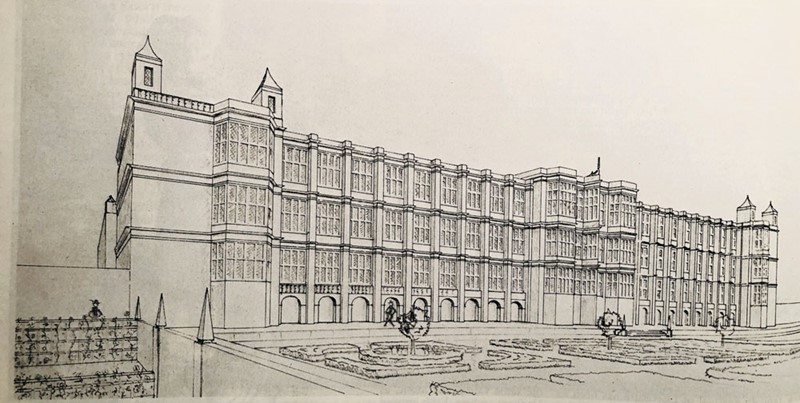
The original Holdenby building
As to why he had paid for it – ‘I think he did it because Elizabeth told him to,’ suggests Skinner. ‘Byrd was her prized musician. You can imagine him saying, “Ma’am I want to publish my music and I need help”, and she probably just said, “Sir Christopher, I would like you to do me this favour”. Every collection by Byrd has a separate patron. What’s interesting is that Hatton is perfectly suited to the project because he was a man of fun, he was famous at courtly love, and he would have been very much exposed to this sort of music.’
Sadly the house no longer survives. Demolished in the 17th century (by which time it had played host to a monarch, though in less happy circumstances, when Charles I was held prisoner there), today’s elegant 19th-century house, modelled in the style of its forebear, is but one-eighth the size of the original. But predating either of the houses, and still standing just a few hundred yards away, having survived all the upheaval of the era, is the 14th-century medieval church which would have served Hatton’s estate (and in which you can find a carved screen that had once separated Holdenby’s great hall from its chapel). And this, tucked sedately among trees, is where Byrd’s 1588 collection is now being recorded.
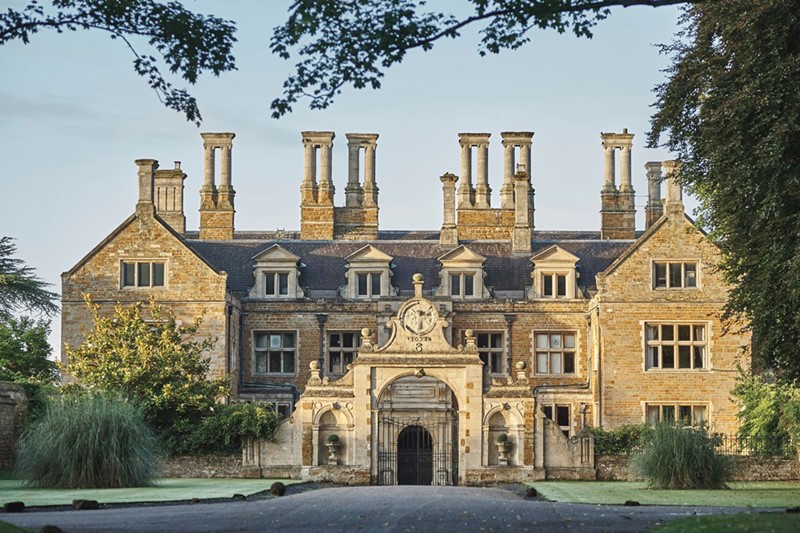
Holdenby House today
Remarkably, this is the first time the collection has been recorded complete. Aside from the order, there were further significant decisions to be made. According to Byrd, the songs were ‘originally made for Instruments to expresse the harmony, and one voyce to pronounce the dittie [poem]’. However, on publication Byrd chose to adapt them entirely for voices – though also suggesting that they could be played entirely on instruments. Taking him at his word, Skinner has opted for a bit of both: 13 songs are presented as purely vocal, four as purely instrumental, and the remainder (and majority) for one singer and instruments. The instrumental parts are taken by the viol consort Fretwork, while the singers comprise three soloists (soprano Grace Davidson, mezzo Martha McLorinan and tenor Nicholas Todd) plus Skinner’s vocal ensemble Alamire.
Today it’s the turn of Davidson to record three pieces from the ‘Sonnets and pastorals’ section and, as her voice fills the embracing acoustic of the chapel, I’m aware that it’s the first such singing I’ve heard for many months (these sessions took place in a reprieve between lockdowns). If reacquainting my ears with live music via the delicate delights of an Elizabethan sonnet feels like a moving moment to me, how much more so must it have been for the artists? The recording is Alamire’s first project since the pandemic struck. ‘After the first song we sang’, recalls Skinner of their initial rehearsal, ‘I was waiting to say something, and then I felt that if I was going to speak, I’d cry. It’s quite emotional to get back together.’
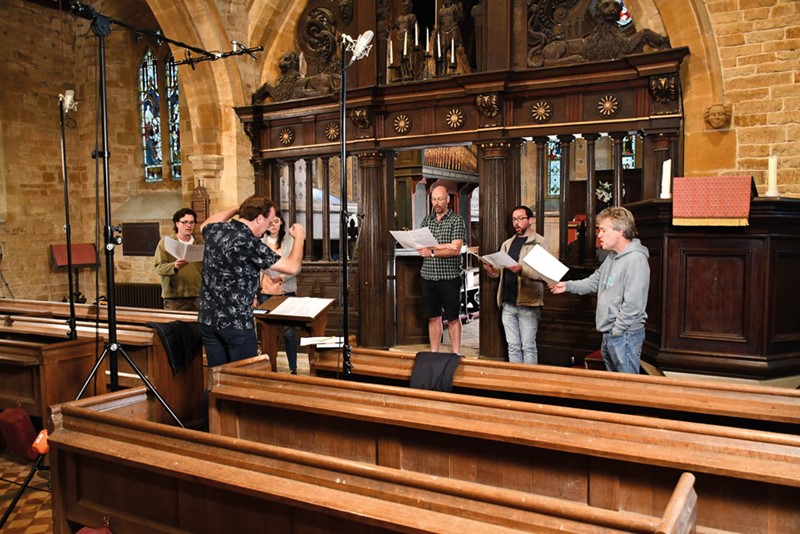
Having addressed the order of the songs, and the instrumentation (or not), one final question was what to do about all the verses of each song. As Skinner points out, the opening verses, which Byrd set, all fit the music perfectly. Subsequent verses, however, don’t always – and indeed were only printed as paragraphs, which wouldn’t have made singing them from the score easy. Indeed, says Skinner, in many cases ‘you have to muck about with the rhythms to make it fit. Some of it is a little bit clumsy, and if that was the case we left it out.’ In actual fact, singing all the verses to all of the works would have necessarily made not for a double disc but a modest box-set. So the decision was taken, in the Psalms, ‘to cut judicially, based on what’s going to work – what’s still going to tell a story without damaging the actual narrative of the Psalm. But for the remaining settings – including the poems written by Sir Philip Sidney, Walter Raleigh and Edward de Vere, the 17th Earl of Oxford – we did them complete.’ This includes the Byrd Lullaby, which sets the Christmas story and whose author is unknown. ‘All we ever hear is the first and final verses, but they’re all gorgeous,’ said Skinner, ‘so we’ve done all four.’
The resulting recording offers a compelling insight into this extraordinary moment in English history. Court life, political patronage, enjoyable gems from one of our greatest composers, sacred and secular sensibilities – it’s all there to be explored. As I leave the sessions and return from this tranquil rural retreat back towards a society nervously navigating its way through the Covid rules and regulations, it’s with a sense of genuine joy to have heard Byrd’s music brought to life in a location so indelibly associated with it – to have stepped, in spirit at least, out of our own era and back across the centuries. The scenes may have changed, but the music remains.
Read the Gramophone review of 'Byrd 1588' in the Gramophone Reviews Database
This article originally appeared in the May 2021 issue of Gramophone. Never miss an issue – subscribe today





